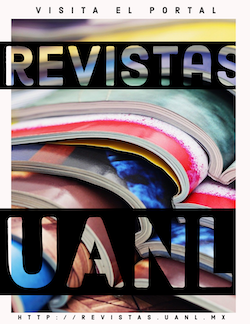Una nueva perspectiva en la metodología de enseñanza y lectura de textos profesionales de EMPP/ESP para uso medico y paramédico en Irán
DOI:
https://doi.org/10.29105/rinn1.1-3Palabras clave:
EMPP, Enseñanza, ESP, MetodologíaResumen
Con el Nuevo milenio ha crecido y ha devenido urgente la necesidad de desarrollar las capacidades para entender y comunicarse con sus semejantes. El intercambio internacional de ideas ha devenido algo vital. Para cubrir esta necesidad un número creciente de personas buscan mejorar sus capacidades lingüísticas para lo cual el método ESP se ha convertido en un medio adecuado.
Descargas
Citas
Bartlett, L. 1990. Teacher development through reflective teaching. In: Second Language Teacher Education, Cambridge, 1988, J. C. Richards and D. Nunan ( Eds.), pp. 202-214. Cambridge University Press.
Block, E. 1986. The comprehension strategies of second language readers. TESOL Quarterly, 20(3): 463-494.
Bright, J. A., & McGregor, G. P.1970. Teaching English as a second language: Theory and techniques for the secondary stage. Longman. London.
Candlin, C. N. 1987. Towards Task-Based Language Learning. In: Language Learning Tasks, C. N. Candling and D. F. Murphy (eds.), pp. 123-147. Printice-Hall International.
Carrell, P. L. 1983. Three components of background knowledge in reading comprehension. LL, 33(2): 183-207.
Carrell, P. L. 1985. Facilitating ESL reading by teaching text structure. LL, 35(3): 233-241.
Carrell, P. L. 1987. Content and formal schemata in ESL reading. TESOL Quarterly, 21(3): 461-481.
Chia, H. U., R. Johnson, H. L. Chia & F. Olive. 1999. English for college students in Taiwan: A study of perception of English needs in a medical context. English for Specific purposes, 18(2): 107-119.
Deedari, R. 1992. Engklish for Medical Purposes. SAMT Publications.
Devine, J. 1987. General Language Competence and Adult Second Language Reading. In: Research in Reading in English as a Second Language, J. Devine, P. Carrel, & D. Eskey (Eds.), pp. 73-86. Washington D. C.
Dudley-Evans, T, and M. St. John. 1998. Developments in English for Specific Purposes. In: Another look at interlanguage talk: Talking task to task, R. Day (ed.), pp. 147-181. Rowley Newbury House. M. A.
Ellis, M. and C. Johnson. 1994. Teaching Business English. Oxford, OUP.
Fakharzadeh, S. S. 2000. Medical texts: genre analysis. EMBO. 10: 1565–1569
Goodman, K. 1986. What's whole in whole language? Portsmouth, Heinemann Educational Books, Inc.
Hansen, J., & P. D. Pearson. 1983. An instructional study: Improving the inferential comprehension of fourth grade good and poor readers. Journal of Educational Psychology. 75: 821-829.
Holley, C. D., & D. F. Dansereau. 1984. Spatial learning strategies: Techniques, applications, and related issues. Academic Press, N. Y.
Idol, L. 1987. Group story mapping: A comprehension for both skilled and unskilled readers. Journal of Learning Disabilities. 20: 196-205.
Johns, A. M. & T. Dudley-Evans. 1991. English for specific purposes: International in scope, specific in purpose. TESOL Quarterly, 125: 297-314.
Katilin, M. 2000.Reading Processes, Think-aloud, Task complexity, task difficulty, and task production: Exploring. Interactions in a componential framework. Applied Linguistics, 23: 27-57.
Keene, E. & S. Zimmermann. 1997. Mosaic of Thought: Teaching Comprehension in a Reader’s Workshop. Portsmouth, Heinemann.
Kintsch, W., & T. A. van Dijk. 1978. Toward a model of text comprehension and production. Psychological Review. 85: 363-394.
Lessard-Clouston, M. 1997. "Language Learning Strategies: An Overview for L2 Teachers" on The Internet. TESL Journal, 38: 34-46.
Long, M. H. 1985. A role for instruction in second language acquisition. In: Modelling and assessing second language acquisition, K. Hyltenstam & M. Pienemann (eds.), Clevedon, Multilingual Matters.
Long, M. and G. Crookes. 1992. Three Approaches to Syllabus Design. TESOL Quarterly, 26(1): 27-49.
Nunan, D. 1988. The learner-centered curriculum: A study in second language teaching. Cambridge University Press. Cabridge.
Nunan, D. 1991. Communicative tasks and the language curriculum. TESOL Quarterly, 25(2): 279-295.
Oxford, R., & J. Green. 1995. Comments on Virginia LoCastro's "Learning strategies and learning environments". Making sense of learning strategy assessment: Toward a higher standard of research accuracy. TESOL Quarterly, 29(1): 166- 171.
Prabhu, N.S. 1987. Second Language Pedagogy. Oxford University Press. Oxford.
Richards, J. C. 1998. Beyond Training. Cambridge University Press. N. Y.
Richards, J.C. and C. Lockhart. 1994. Reflective Teaching in Second Language Classroom. Cambridge University Press. N. Y.
Robinson, P. C. 1991. ESP today: A practitioner's guide.Englewood. Prentice Hall, Cliffs, N. J.
Silvern, L. and M. Vauras. 1992. Think aloud and its function in teaching reading. RELC J. 23: 2-29.
Skehan, P. 1995. A Framework for the Implementation of Task-Based Instruction. Applied Linguistics, 17(1): 38-62.
Tian, G. S. 1990. The effects of rhetorical organization in expository prose on ESL readers in Singapore. RELC J. 21: 1-11.
Widdowson, H. G. 1977. Strategies for teaching the rhetoric of written English for science and technology. TESOL Quarterly, 12(3): 321-327.
Willis, J. 1996. A Framework for Task-Based Learning. Longman.
Descargas
Publicado
Cómo citar
Número
Sección
Licencia
Derechos de autor 2017 Innovaciones de Negocios

Esta obra está bajo una licencia internacional Creative Commons Atribución-NoComercial-CompartirIgual 4.0.
La revista InnOvaciOnes de NegOciOs es una revista electrónica gratuita y de acceso abierto de carácter científico-académico y es una publicación de la Universidad Autónoma de Nuevo León, en la cual los autores conservan sus derechos de autor y otorgan a la revista el derecho exclusivo de primera publicación del trabajo. Se permite que terceros utilicen el contenido publicado, siempre y cuando se reconozca la autoría del trabajo y se cite la primera publicación en esta revista.
Para mayor información favor de comunicar a la Secretaria de Investigación (FACPyA) de la Universidad Autónoma de Nuevo León. Teléfono: (81) 1340-4431. Correo electrónico: revinnova.negocios@uanl.mx










